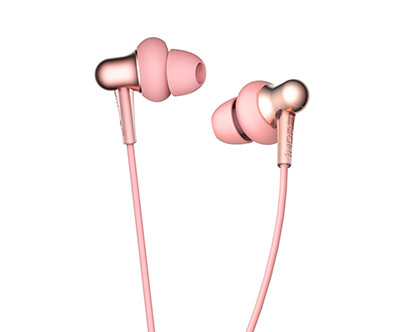 Afrikaans
Afrikaans  Albanian
Albanian  Amharic
Amharic  Arabic
Arabic  Armenian
Armenian  Azerbaijani
Azerbaijani  Basque
Basque  Belarusian
Belarusian  Bengali
Bengali  Bosnian
Bosnian  Bulgarian
Bulgarian  Catalan
Catalan  Cebuano
Cebuano  Corsican
Corsican  Croatian
Croatian  Czech
Czech  Danish
Danish  Dutch
Dutch  English
English  Esperanto
Esperanto  Estonian
Estonian  Finnish
Finnish  French
French  Frisian
Frisian  Galician
Galician  Georgian
Georgian  German
German  Greek
Greek  Gujarati
Gujarati  Haitian Creole
Haitian Creole  hausa
hausa  hawaiian
hawaiian  Hebrew
Hebrew  Hindi
Hindi  Miao
Miao  Hungarian
Hungarian  Icelandic
Icelandic  igbo
igbo  Indonesian
Indonesian  irish
irish  Italian
Italian  Japanese
Japanese  Javanese
Javanese  Kannada
Kannada  kazakh
kazakh  Khmer
Khmer  Rwandese
Rwandese  Korean
Korean  Kurdish
Kurdish  Kyrgyz
Kyrgyz  Lao
Lao  Latin
Latin  Latvian
Latvian  Lithuanian
Lithuanian  Luxembourgish
Luxembourgish  Macedonian
Macedonian  Malgashi
Malgashi  Malay
Malay  Malayalam
Malayalam  Maltese
Maltese  Maori
Maori  Marathi
Marathi  Mongolian
Mongolian  Myanmar
Myanmar  Nepali
Nepali  Norwegian
Norwegian  Norwegian
Norwegian  Occitan
Occitan  Pashto
Pashto  Persian
Persian  Polish
Polish  Portuguese
Portuguese  Punjabi
Punjabi  Romanian
Romanian  Russian
Russian  Samoan
Samoan  Scottish Gaelic
Scottish Gaelic  Serbian
Serbian  Sesotho
Sesotho  Shona
Shona  Sindhi
Sindhi  Sinhala
Sinhala  Slovak
Slovak  Slovenian
Slovenian  Somali
Somali  Spanish
Spanish  Sundanese
Sundanese  Swahili
Swahili  Swedish
Swedish  Tagalog
Tagalog  Tajik
Tajik  Tamil
Tamil  Tatar
Tatar  Telugu
Telugu  Thai
Thai  Turkish
Turkish  Turkmen
Turkmen  Ukrainian
Ukrainian  Urdu
Urdu  Uighur
Uighur  Uzbek
Uzbek  Vietnamese
Vietnamese  Welsh
Welsh  Bantu
Bantu  Yiddish
Yiddish  Yoruba
Yoruba  Zulu
Zulu types of conveyor belt rollers
Understanding Types of Conveyor Belt Rollers
Conveyor belt systems are integral components in various industries, facilitating efficient movement and transport of materials. A crucial part of these systems is the conveyor belt rollers, which play a vital role in the overall functionality of conveyor systems. Understanding the different types of conveyor belt rollers can enhance system performance and longevity.
1. Idler Rollers
Idler rollers are essential components found along the length of a conveyor belt. They support the belt and help maintain its alignment during operation. Idler rollers come in various designs, including flat and trough-shaped, to accommodate different belt configurations. The most common types of idler rollers are
- Flat Idlers These rollers are used for conveying flat products and materials. They allow for a smooth surface where the belt can operate efficiently. - Troughing Idlers Designed to create a trough shape, these rollers help to center the material being transported, preventing spillage and enhancing material flow. Troughing idlers are often used in bulk material handling applications.
2. Carrying Rollers
Carrying rollers, also known as carrying idlers, are specifically designed to support the weight of the material as it travels along the conveyor belt. These rollers are primarily located under the loaded section of the conveyor and are crucial for maintaining the belt's shape and preventing sagging. They come in various diameters and are constructed from robust materials to withstand heavy loads.
Return rollers are located on the return side of the conveyor belt, where the belt travels back to the loading area. Their primary function is to return the empty belt back to the starting point while keeping the belt in proper alignment. The design of return rollers can vary, often featuring rubber coatings to reduce wear on the belt and minimize noise during operation.
4. Impact Rollers
types of conveyor belt rollers

Impact rollers are placed at loading zones where material is dropped onto the conveyor belt. They are specifically designed to absorb the shock and impact of falling materials, thereby protecting the belt from damage and extending its lifespan. Impact rollers often have a larger diameter and are equipped with rubber or cushioning pads to provide additional support.
5. Guide Rollers
Guide rollers serve a critical function in maintaining the alignment of the conveyor belt. They help to prevent the belt from drifting off course during operation, ensuring that materials are transported correctly. Guide rollers are typically placed at the edges of the conveyor system and can be adjusted to accommodate different belt widths.
6. Self-Aligning Rollers
Self-aligning rollers are designed to automatically correct the direction of the conveyor belt when it begins to misalign. These rollers often feature a pivoting mechanism that allows them to pivot in reaction to the belt’s movement, thereby guiding the belt back to its intended path. This type of roller is crucial in minimizing wear on both the belt and the idlers, reducing maintenance costs.
7. Specialized Rollers
Beyond the standard types of rollers, various specialized rollers are designed for specific applications. For example, there are rollers equipped with knobs or wings for handling sticky materials, or rollers made from materials resistant to corrosion for use in harsh environments. These specialized rollers ensure optimal performance in unique operating conditions.
Conclusion
Choosing the right type of conveyor belt roller is essential for any material handling system. By understanding the various types of rollers, including idler rollers, carrying rollers, return rollers, impact rollers, guide rollers, self-aligning rollers, and specialized rollers, businesses can enhance their conveyor system's efficiency and reliability. Regular maintenance and timely replacement of worn-out rollers are vital to ensure the longevity of conveyor systems and to optimize material transport processes in any industrial setting. Implementing the appropriate conveyor belt rollers not only improves the efficiency of operations but also contributes to the overall safety and productivity of the workplace.
-
Taper Centering Idler Set for Conveyor SystemsNewsJun.25,2025
-
Small Idler Rollers for Industrial ConveyorsNewsJun.25,2025
-
Guide Training Idler Set for Conveyor MaintenanceNewsJun.25,2025
-
Friction Offset Idler Set for Industrial UseNewsJun.25,2025
-
Double-Center-Roller Idler AlignmentNewsJun.25,2025
-
Channel Inset Impact Troughing Idler Set for Heavy LoadsNewsJun.25,2025





























